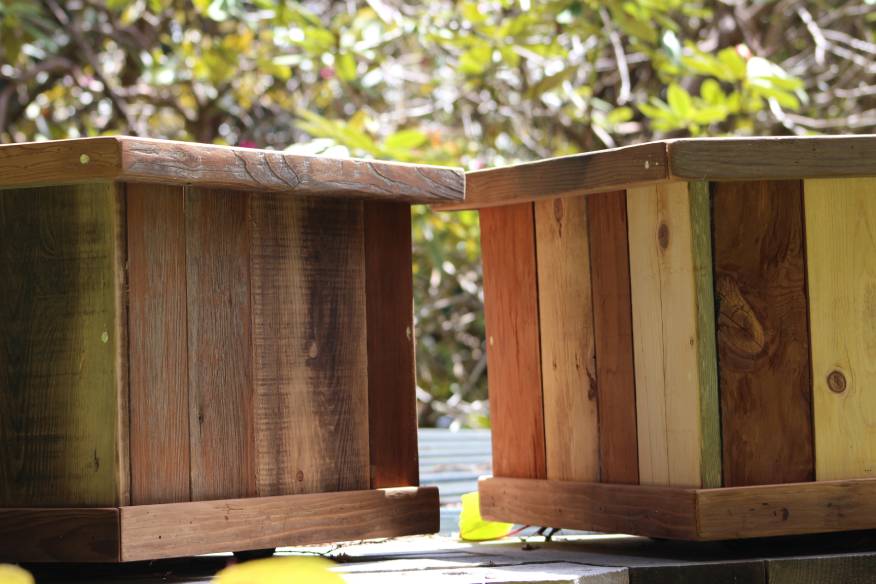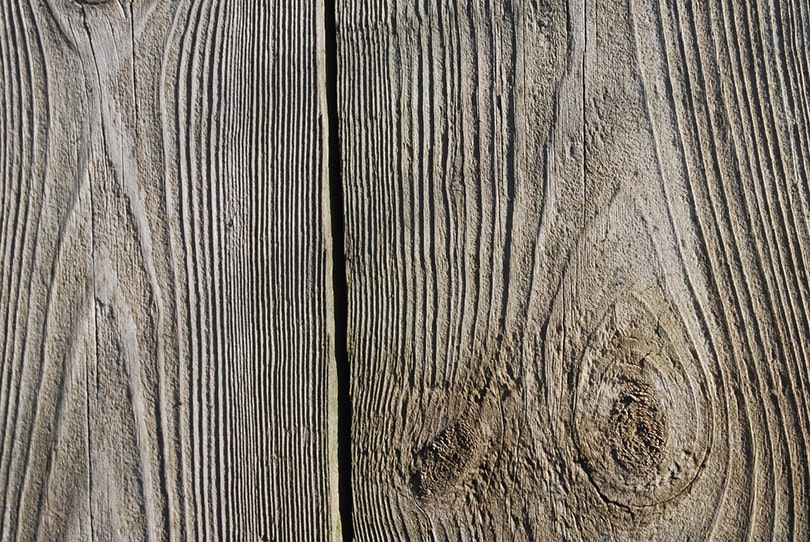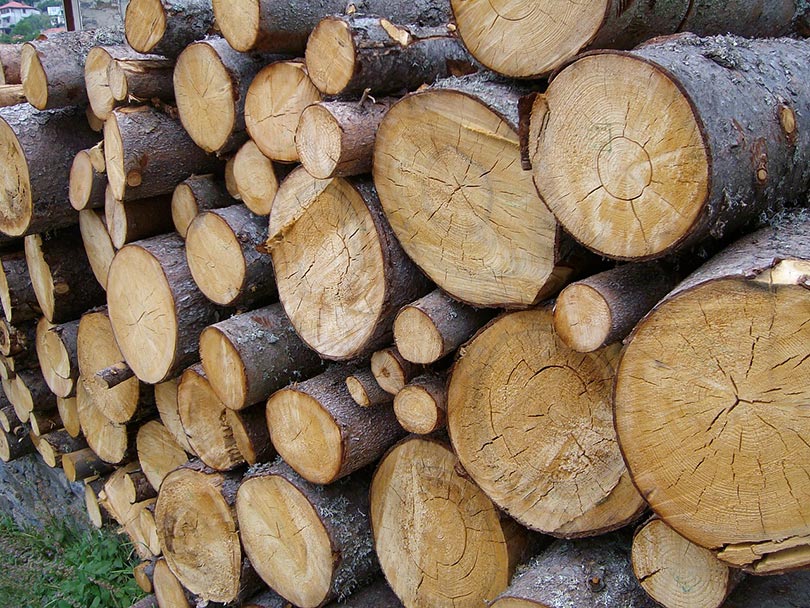What Is The Best Wood For A Birdhouse? (With Pictures)
-
Pete Ortiz
- Last updated:

A birdhouse is a great way to attract local wildlife to the garden. It provides a sheltered and safe place for birds to grab some food and a place to eat it. It can also provide you and your family with excellent opportunity to watch the birds’ behavior as they eat.
The birdhouse itself needs to be durable and strong because it will be outside in all weathers. It needs to remain free from insect infestation, resistant to rot, and it also needs to be easy to work with so that you can create an appealing and inviting environment. Choosing the right wood, therefore, is important.
Below, we have highlighted 9 of the best woods for making your own birdhouse: which is best for you will depend on availability, budget, prevailing weather conditions, and even your woodworking capabilities.
The 9 Best Types of Wood for Birdhouses
1. Cedar

Cedar is more expensive than some of the other woods on this list, but it does have a beautiful red tint to the grain when it is new so it will look attractive in your yard or garden. It is a lightweight material, which reduces the risk of the birdhouse falling over; handles temperature changes well; and is a natural insulator, so it will keep your winged visitors warm in the winter. Cedar does not need staining and is naturally resistant to rot and insects.
- No need to stain
- Easy to work with
- Natural red tint
- Lightweight but structurally stable
- Resistant to rot and insect infestation
- Expensive
- Fades over time
2. Redwood

Redwood is another timber with an attractive color, and has an even more obvious red tint than cedar. It is readily available but while some redwood is inexpensive, premium cuts carry a premium price tag. The wood is easy to work with, but it is prone to damage from pecking and scratching so won’t be suitable for gardens that attract more aggressive diners. Once constructed, a redwood birdhouse will be resistant to insects, does not need staining or treating, and it won’t suffer from damp issues.
- Easy to work with
- Readily available
- Attractive color
- No need to treat the wood
- Resistant to insects, damp, and warping
- Not suitable for aggressive peckers
- Premium redwood can be pricey
3. Pine

Pine is a common choice of material for woodworking projects because it is a softwood that is easy to work with and is one of the most affordable of wood choices. If you’re a keen woodworker, there’s a chance you already have some pine waiting to go. Unfortunately, the wood needs treating if it is to be used outdoors. It is also easily damaged, but it is resistant to moisture so is a good choice if you live in an area that is prone to a lot of rain. Its elasticity also means that the wood is not prone to becoming misshapen either when working with the wood or once it is up and being used.
- Easy to work with
- Cheap
- Readily available
- Moisture resistant
- Elastic
- Prone to damage
- Needs to be treated
4. Douglas Fir

Douglas fir is grown all over the world, so it is easy to get hold of and inexpensive. This non-toxic wood is durable and has good structural strength. It is resistant to insects and rot, and it doesn’t shrink. Fir is also lightweight, making it a good choice for a birdhouse. However, you will need strong tools because the coarse texture can be challenging to work with.
- Widely available
- Relatively inexpensive
- Non-toxic
- Doesn’t warp
- Resistant to insects
- Difficult to work with
5. Cypress
Cypress is a light-colored wood with natural oils that help protect against rot. It is easy to work and available for low prices, but the same oils that give this wood its natural protection also give it a strong odor and can also cause respiratory problems, including in the birds that use it. Some of the birds in your area may choose to avoid a cypress birdhouse.
- Cheap
- Available
- Resistant to rot and weather
- Easy to work
- Strong smell
- May deter some birds
6. Teak

Teak is somewhat difficult to come by and has a high price tag, but it is popular for use in marine applications because of its high resistance to insects, fungi, and rot. It is also revered for its natural beauty. Although it does have a lot of benefits, the high price tag and lack of availability will put a lot of potential birdhouse builders off.
- Natural oils make it moisture resistant
- Resistant to rot, fungi, and insects
- An excellent choice for outdoor use
- Difficult to get hold of
- Very expensive
7. Oak

Oak is another expensive wood, although not as pricey as teak. It is a heavy wood that is often used in building construction and for other heavy-duty tasks, and you do need to bear this in mind when designing your new birdhouse. However, it is not toxic to birds, it doesn’t need staining or treating, and it is moisture-resistant, so it is a good choice for external use. Different colors of oak are also available, ranging from white oak to oak with a reddish color.
- Wide range of colors
- No need for treating or staining
- Non-toxic to birds
- Very strong
- Moisture resistant
- Quite expensive
- Very heavy
8. Plywood

Plywood is made up of layers of wood veneer that are glued together. It is easy to work with, cheap, and found in most timber and hardware stores. Phenolic plywood is your best option because it is safe for birds but be aware that some birds prefer natural wood not only because it has a similar appearance to a natural bird hole but also because the rough texture makes entry and exit easier. If you do use plywood for your birdhouse, you will need to coat it and you should provide a rough texture.
- Widely available
- Cheap
- Easy to work with
- Good thermal insulation
- Non-corrosive
- Needs treating
- You need to choose a non-toxic plywood
- Some birds will struggle with the smooth finish
9. Beechwood

Beechwood is a strong wood that is resistant to weather, much like oak. It has a light color, is easy to work with, and is widely considered a cheaper but similar alternative to oak. It is lighter than oak, which makes it a better option for birdhouses, at least in that respect. However, it can shrink with rapid temperature changes.
- Fairly lightweight wood
- Resistant to moisture
- Non-toxic
- Relatively cheap
- Easy to work with hand tools and power tools
- Can shrink
Should You Paint Or Stain A Birdhouse?
Where possible, you should try to ensure that a birdhouse looks as natural as possible, but staining the house is essential when using some woods and especially when using plywood. Painting is not usually necessary and doing so means that you will have to strip and repaint it every year or two. If you do choose to paint or stain the birdhouse, ensure that you use non-toxic stains that won’t repel or even harm the birds.
Can You Use Treated Wood For Birdhouses?
It is generally considered safer to use non-treated wood because this is safer for the birds. However, some pressure-treated wood can be perfectly safe and the treatment helps preserve the wood, therefore increasing its lifespan.

What Do You Put Inside A Birdhouse?
Generally, a birdhouse should be left reasonably bare. It can have a pole or shelf for the birds to sit on and species-specific seeds will help attract birds to your box.
Can You Polyurethane A Birdhouse?
Polyurethane is generally considered safe for birds but there are anecdotal reports of birds avoiding those birdhouses that are painted with this type of material. Consider a natural alternative like linseed oil to preserve and protect the wood, or use a wood that doesn’t require any treatment, if you’re concerned.
How Do You Waterproof A Wooden Birdhouse?
Use a resistant wood, sloped roofs, and ensure that all the joints are properly sealed between the walls and roof. You can also apply linseed oil, although this does take several weeks to dry, so allow plenty of time for this step of the process. Some stains and treatments are also safe for birds, but strong odors can put other birds off.
Conclusion
Having a birdhouse in the garden can attract winged visitors throughout the year. The birdhouse should be safe, offer some protection, and it also needs to look good so that it won’t be an eyesore in your yard. Above, we have listed 9 of the best woods to use in the construction of your next birdhouse, so you can be sure of finding one that is suitable for your project.
Featured Image Credit: MabelAmber, Pixabay
Contents



